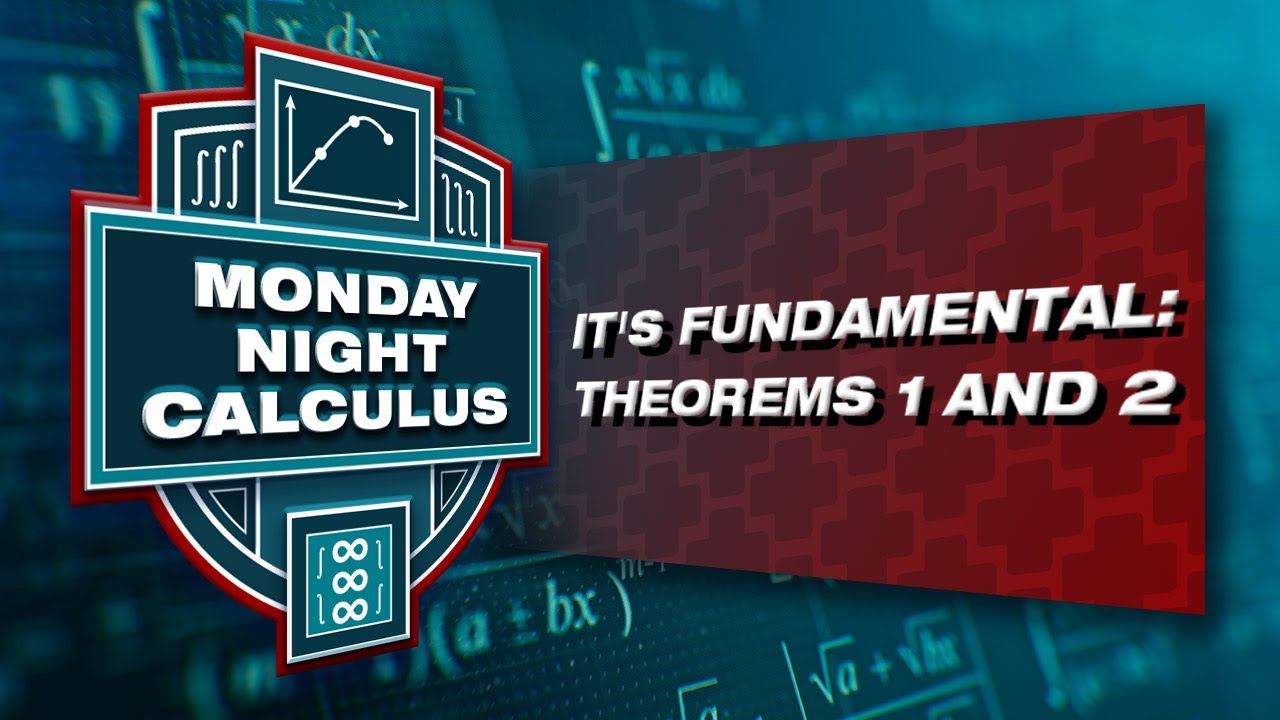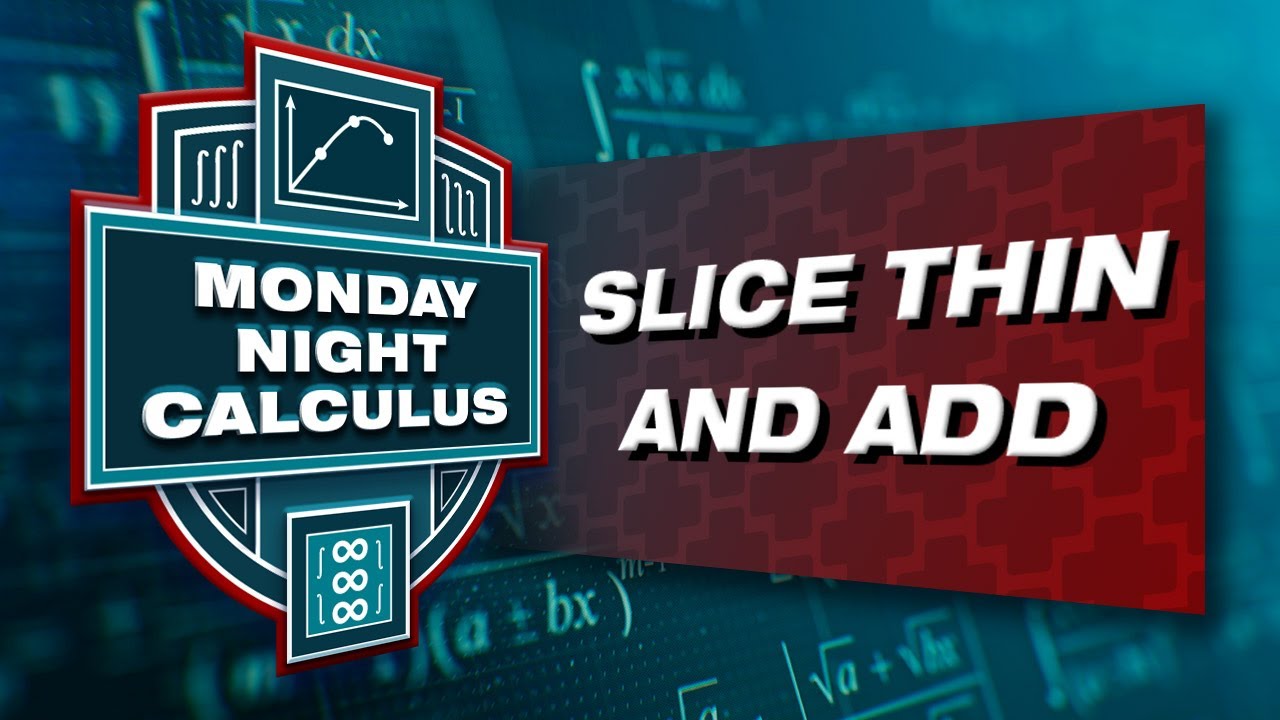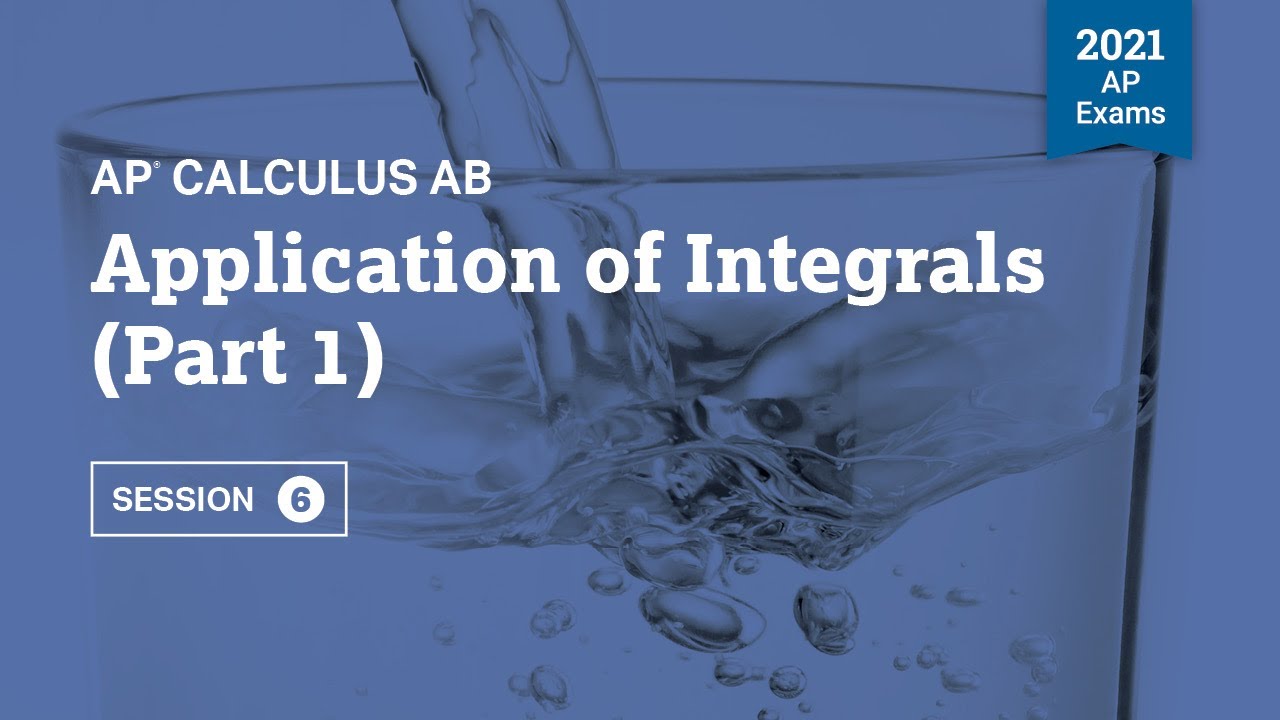It All Adds Up: Accumulation Problems
TLDRIn this engaging calculus session, the hosts discuss accumulation problems, including a detailed analysis of piecewise-defined functions and their derivatives. They explore the application of calculus concepts on real-world scenarios like coffee brewing in a diner and visitor rates in the Louvre Museum. The session also emphasizes the use of technology, particularly graphing calculators, to solve complex problems and visualize mathematical concepts, providing valuable insights for students and teachers preparing for AP Calculus exams.
Takeaways
- 📚 The session focused on accumulation problems, with examples involving piecewise-defined functions commonly found on AP Calculus exams.
- 🤝 Tom and Steve co-hosted the session, discussing various calculus problems and demonstrating how to solve them using both manual calculations and graphing calculator techniques.
- 📊 The discussion included how to interpret piecewise functions and their derivatives, emphasizing the importance of understanding the context and the meaning behind the calculations.
- 📈 Tom demonstrated the use of a graphing calculator (TI-84) to generate graphs of functions and find points of interest, such as relative minimums and inflection points.
- 🔢 Steve provided a detailed analysis of a problem involving a piecewise-defined function, explaining how to determine intervals for relative minimums, points of inflection, and concavity.
- 💡 It was highlighted that students should be cautious when reporting values on exams, ensuring accuracy and adhering to the question's requirements for precision.
- 📝 The session touched on the importance of proper notation and variable use when setting up and solving calculus problems, to avoid errors and ensure clarity.
- 🎓 Teachers were encouraged to engage their students in these review sessions and to utilize the provided resources for professional development and exam preparation.
- 🚫 A reminder was given about the common misconception regarding the existence of relative extrema at endpoints of intervals, which is not possible due to the definition of a relative minimum or maximum.
- 📆 Upcoming sessions were announced, with a focus on differential equations, slope fields, and additional pre-calculus topics for student preparation.
- 🌐 Participants were reminded to email the host for professional development hours and encouraged to share the session links with their students for further study.
Q & A
What is the main topic of discussion in the calculus session?
-The main topic of discussion is the accumulation of ideas, specifically focusing on a piecewise-defined function and its derivative.
What type of function is being analyzed in the calculus problem?
-The function being analyzed is a piecewise-defined function that includes a derivative of another function and a parabola.
How can teachers and students participate in the calculus discussion?
-Teachers and students can participate by sending in their questions about specific calculus concepts, ideas, or problems, and the hosts will be happy to answer them during the session.
What is the significance of the piecewise-defined function in AP Calculus exams?
-Piecewise-defined functions, including their derivatives, have been a mainstay on the AP Calculus exams for nearly 20 years and are likely to appear on the non-calculator part of the exam.
What is the purpose of analyzing the endpoints of a function in the context of relative minimums and maximums?
-Analyzing the endpoints is important because a relative maximum or minimum cannot occur at an endpoint of an interval. Only absolute extrema can occur at endpoints.
How can the graph of a function help in determining points of inflection?
-Points of inflection can be determined by using the graph of the function's derivative, where the function has a point of inflection wherever its derivative changes from increasing to decreasing or vice versa.
What is the fundamental theorem of calculus used for in this context?
-The fundamental theorem of calculus is used to evaluate the definite integral from one point to another, which helps in finding the function values at specific points and determining the maximum or minimum values of the function over a given interval.
How can the TI-84 and TI-Inspire calculators assist in solving calculus problems?
-Both calculators can assist in solving calculus problems by graphing functions, finding derivatives, evaluating definite integrals, and performing other calculus-related computations.
What is the importance of using technology, like the TI-Inspire, in solving calculus problems?
-Using technology like the TI-Inspire allows for symbolic manipulation of the problem, providing more accurate and efficient solutions. It also enables graphical representation of functions and their derivatives, which can aid in visualizing and understanding the problem better.
What is a common mistake students make when listing values of x for a minimum or maximum?
-A common mistake is listing ordered pairs or specific points without considering the open interval around the critical value. Students should understand that relative minimums and maximums occur within open intervals and not at endpoints.
Outlines
📚 Introduction to Calculus Lecture
The paragraph introduces a calculus lecture happening on a Monday night, focusing on accumulation. The host welcomes participants from Texas and Alabama, and encourages students to ask questions about the document provided. The host also mentions that the discussion will include good questions prepared by Tom and Steve, and highlights the importance of a piecewise-defined function and its prevalence in AP Calculus exams.
📱 Technology in Graphing Functions
This paragraph discusses the use of technology, specifically a calculator, to graph functions. The speaker demonstrates how to create a piecewise-defined function with four parts using the calculator's menu options. They explain how to input formulas and intervals for each part, and how to handle inequalities and domain specifications. The speaker also talks about displaying graphs and generating practice questions for students.
🔍 Analyzing a Piecewise Function
The speaker analyzes a piecewise function that has been graphed, discussing the significance of understanding the graph's structure, including its line segments and parabolic part. They mention the importance of this type of problem, which has been a staple on AP Calculus exams for about 20 years. The speaker also talks about relative minimums, points of inflection, and how to identify them using the graph of the function's derivative.
📈 Examining Concavity and Increasing Intervals
The speaker focuses on how to determine the intervals where the graph of a function is concave up and increasing. They explain the use of the function's derivative in identifying these intervals and the importance of including endpoints in the analysis. The speaker also addresses common mistakes students make when identifying points of inflection and emphasizes the need to avoid providing ordered pairs for these points.
🏆 Finding Absolute Minimum Value
The speaker discusses how to find the absolute minimum value of a function over a closed interval. They explain the process of identifying critical points, evaluating the function at these points and at the endpoints of the interval. The speaker also cautions against common mistakes, such as failing to include the endpoints in the list of critical points or misinterpreting the question's requirements.
🤔 Reflecting on the Use of Technology
The speaker reflects on the use of technology in solving calculus problems, particularly in visualizing the graph of a function and its derivative. They discuss the process of obtaining an explicit expression for a function using the fundamental theorem of calculus and the challenges of graphing complex functions. The speaker also shares tips on using calculator shortcuts and emphasizes the importance of clear and accurate responses when solving problems.
📊 Coffee Brewing and Consumption Rates
The speaker presents a problem involving rates of coffee brewing and consumption in a diner. They explain how to use definite integrals to calculate the amount of coffee brewed and consumed over a 12-hour period. The speaker also discusses how to determine when the amount of coffee in the diner is increasing or decreasing and how to find the maximum amount of coffee in the diner using a list and spreadsheet feature on a calculator.
🎨 Musée du Louvre Visitor Rates
The speaker analyzes visitor rates at the Musée du Louvre in Paris using functions to represent the rate of entry and exit. They discuss how to find the total number of people who have entered the museum by a specific time and whether the number of visitors is increasing or decreasing at that time. The speaker also explains how to determine the maximum number of people in the museum and shares their experience using a calculator's graphing and table features to solve the problem.
🍯 Vermont Maple Syrup Collection
The speaker briefly mentions a problem related to the collection of Vermont maple syrup, highlighting the use of technology for estimation and the importance of understanding the problem's context. They also reference a question about Oreo cookies, emphasizing the relevance and application of mathematical concepts in everyday situations.
📝 Evaluating a Definite Integral
The speaker discusses the process of evaluating a definite integral, emphasizing the importance of finding an anti-derivative and the potential differences in answers when using a CAS (Computer Algebra System). They caution that the CAS may return an answer in a different form than expected, and stress the need for students to be aware of these differences and the properties of logarithms to understand and verify their answers.
🙏 Conclusion and Future Sessions
The speaker concludes the session by summarizing the topics covered and encouraging teachers to claim professional development hours. They also provide information about upcoming sessions, which will focus on differential equations and slope fields, and invite students to participate in the discussions and use the questions for preparation.
Mindmap
Keywords
💡Calculus
💡Piecewise Functions
💡Derivative
💡Integral
💡Accumulation
💡Relative Minimum
💡Point of Inflection
💡Concavity
💡Absolute Minimum
💡TI-84 Calculator
Highlights
The session focuses on accumulation in calculus, with a discussion on piecewise-defined functions and their derivatives.
The importance of understanding the concept of accumulation is emphasized, as it has been a mainstay on the AP Calculus exams for nearly 20 years.
A detailed walkthrough of constructing a piecewise-defined function on a TI-84 calculator is provided, showcasing the use of technology in calculus problems.
The session highlights the use of the fundamental theorem of calculus in solving for function values and analyzing the behavior of functions.
A comprehensive analysis of a piecewise-defined function's graph is conducted, identifying intervals of increase and concavity.
The concept of relative minimum and maximum values of a function is discussed, along with the conditions that must be met for their occurrence.
The session addresses common mistakes students make when identifying points of inflection and provides guidance on how to correctly approach these problems.
The use of the TI-84 and TI-Inspire calculators in solving calculus problems is demonstrated, showing the capabilities of these tools in symbolic computation.
A real-world scenario involving the accumulation of coffee in a diner over time is used to illustrate the application of calculus concepts.
The session concludes with a discussion on the maximum number of people in a museum over a 12-hour period, emphasizing the practical applications of calculus.
Transcripts
Browse More Related Video

Fall 2023 MNC: It's fundamental - Exploring FTC 1 & 2

AP Calculus BC 2003 Multiple Choice (calculator) - Questions 76 - 92

Fall 2023 MNC: Slice thin and add - Riemann sums and definite integrals

2021 Live Review 2 | AP Calculus AB | Contextual & Analytical Applications of the Derivative

2021 Live Review 6 | AP Calculus AB | Application of Integrals (Part 1)

AP Calculus Practice Exam Part 5 (MC #84-90)
5.0 / 5 (0 votes)
Thanks for rating: